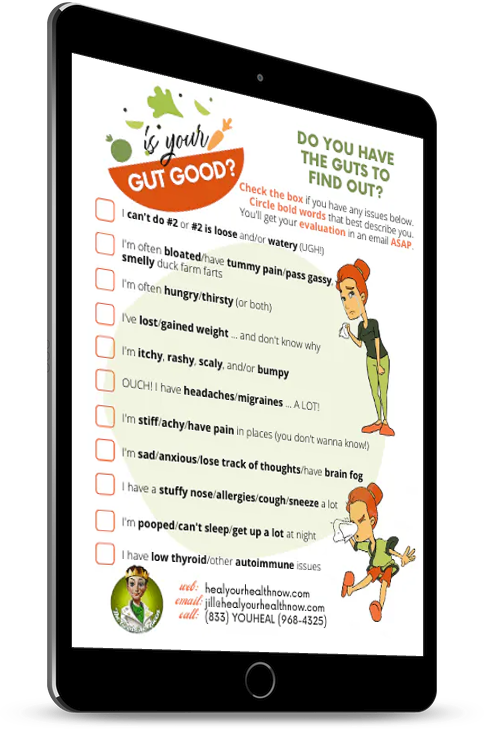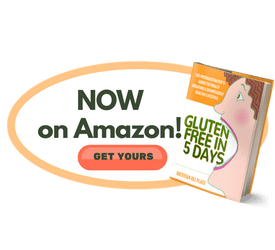 By Dietitian Jill Place
By Dietitian Jill Place
When I was a brand-new dietitian, I worked at several HMO’s. And, of all the people I’ve counseled over the years, one is inked in my head as indelibly as permanent marker on a grease board.
One of the nurses came to me one day desperate to lose weight. “I have no problem with breakfasts”, she said, “but when I come here, I eat nonstop until I get home. So can I have some breakfast menus?” My comeback … “Why … you have no problem with breakfasts”.
We worked in adjoining offices, and she went out of her way to avoid me the entire rest of the time I was there. I know that part of it was that I thrust her nose into the goo of reality.
But she was totally in denial over what was really going on … that the stress of her job caused her to overeat. Instead, she wanted a more rigid structure for the only part of her eating that actually made sense.
What’s a Girl (or Boy) to Do?
When you’re this clueless about what you do with food, where do you actually start to unravel the very tangled skein of behaviors that’s your eating person-ality? Well … no matter which you possess (and I’ll talk more about ways to help each in later articles), you have to first begin trudging through that great goo of reality.
My advice first … keep a food record for three days. It’ll help you find out what exactly you do with food.
But the only way this is going to work is to write down EVERY MORSEL of food you put in your mouth. There are also photo food record smartphone apps such as “Ate” and “See How You Eat”, where you can take a picture and comment on what you ate.
Even more important … what you WON’T write down or snap … take note of that too in some way. Hey … it’s only for three days … just do it!
What Do I Do Afterwards?
So what do you do now that you have a little more awareness of your food behaviors? Well … if you noticed when you read part two (if you haven’t already, you might want to go back to both parts one and two to take the quiz and find out what type of eating person-ality you have; go here to read part one and here to read part two), I talked a lot about trying to control a seemingly uncontrollable world, stuffing down feelings with food, and feeling ashamed about your food behaviors.
Did you feel some of those feelings when you did the food record? GOOD! The only path that I know out of debilitating food person-alities and accompanying negative eating habits is to become more enlightened about what’s totally up with you. And, if you felt some feelings, that’s a start.
Here’s what I’d suggest next … increase your general awareness … not only of your eating but, as you can see by the explanations in part two, these behaviors are multi-overlaid and chasm-deep. And have many reasons for being there.
So becoming more aware means that you can get in better touch with your emotions. Because emotions are the key; if you can acknowledge and then embrace these powerful behavioral modulators, then you can change the behavior for good.
I’m extremely lucky that I was born overly sensitive and with an overabundance of raw emotion. For many years, however, it seemed like a curse.
But then I discovered acting and singing, and these sensitivities became precious commodities. Commodities that I trained mercilessly.
Most people, however, don’t have this initial gift that they then honed and perfected. But it can be learned by everyone who wants to do so … and a lot more gently than I did. You gotta start somewhere … why not here …
Finding Awareness
Here’s more advice … do these awareness exercises. We’re not even touching food yet.
Because it’s important that you first become comfortable with the process. And confronting food behaviors head on without developing a foundation upon which to do so may have the opposite effect of driving them deeper into your being.
That’s why many people believe in diets, even though they have lots of personal proof that they don’t work. Let’s face it … for some … feelings are totally scary …
Exercise One … TAKING IT IN.
Turn off the music, the TV, your family … and any other distractions in the room. Sit in a straight-back chair without arms (so you can move freely).
Sit comfortably with your feet flat on the floor (make sure the chair isn’t so tall that your feet can’t touch the floor), lower your eyes or close them entirely, and take two or three slow breaths in and out on a count of five; then breathe normally.
Just sit for at least five minutes (you can even set a timer if you want), taking in what’s happening around you with your senses. What do you hear, feel, or smell? Feel the chair under you … the clothes and the way they fit/hang. Smell whatever scents are there … what sounds are present … Just take everything in.
Right now, I hear a plane overhead (I live between two small airports), the buzz of my fridge … the way the cuffs of my robe rub against my wrists … the feeling of computer keys under my fingers, the tick-tick of one of my clocks, the slight whiff of my perfume. … the motor of a car passing. Take it all in for yourself … that’s all you need to do.
Exercise Two … RELAX
So … after you’ve been taking in input from your senses for a while, tune into your body. Where does it feel tense or uncomfortable? Right now, my right hip feels like it needs to move. So I just shifted it slightly … that feels better. And now my right shoulder is beginning to ache. So I rotated it a little.
That’s why you’re sitting in this type of chair. It allows you to move freely while containing your movement and keeping you cradled and supported.
So it doesn’t feel so scary to try this. You’re just moving parts of your body that feel tense or uncomfortable. And readjusting others to feel a little more relaxed. If you feel the need to breathe deeply a few times, do that too. That’s all you’re doing right now.
Remember that there is no right or wrong with any of this … it’s merely a process to become more aware of your surroundings and your body first … so we can then move on to feelings and food awareness later. There’s no skipping steps here though … you have to walk before you can fly.
Or rather become aware of your senses. And then relax into them. This is a beginning of this journey. Make it a daily practice … even if it’s just five minutes a day.
If you’re wondering what this all has to do with ultimately becoming a “Good-Eater”, I did the same with my acting.
When I asked why I was doing an exercise, my coach’s response was … “KEEP MOVING!” But awhile later, when I started booking gigs and people started to whisper about me at the Actor’s Studio, I understood the value of all of the work I had done beforehand.
I just had to TRUST it. And, like my coach said, keep moving. You do too.
Hang in there … if you do what I tell you … your life is about to change …
Which of these ideas resonated with you? Are you willing to do some work if it’ll change the way you currently eat?


Leave a Reply